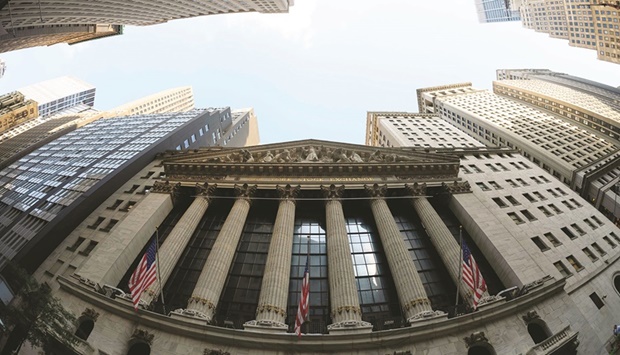Some investors are preparing for a hawkish turn from the Federal Reserve by buying the cyclical, economically-sensitive names they gravitated to earlier this year, as expectations grow that the central bank is zeroing in on fighting inflation.
The gap between growth stocks and their value-focused counterparts, which include companies like banks, financials and energy firms, has fluctuated throughout the year, driven in part by bets on how quickly the Fed will normalise monetary policy.
In recent days, signs that the central bank will move faster than expected in the face of surging consumer prices have slammed the shares of growth and technology companies, which have also been roiled by broader market volatility stemming from concerns over the spreading Omicron variant of the coronavirus.
At the same time, some investors have been ramping up bets on so-called value stocks, expecting them to perform better in an environment of tightening monetary policy. Such stocks surged earlier in 2021 as the US economy reopened but faltered later as investors gravitated toward tech shares.
“The Fed brings the punch bowl and they are the ones that remove the punch bowl,” said Michael Antonelli, strategist at Baird.”Markets are quickly repricing their view of the future.”
Futures on the federal funds rate, which track short-term interest rate expectations, late Friday reflected a roughly 50% chance that the Fed will raise rates from its current near-zero level by May, CME’s Fed Watch tool showed.
That compared with around 31% in early November. Driving those bets are comments from Fed Chairman Jerome Powell, who earlier this week said the central bank will likely in its next meeting discuss speeding the unwind of its $120 billion-per-month government bond-buying programme.
Powell also said the word “transitory” was no longer appropriate to describe the current high inflation rate.
Stronger-than-expected elements in Friday’s US employment report reinforced the view of a more hawkish Fed and weighed on growth stocks.
Among the casualties was the Ark Innovation ETF, which outperformed all other US equity funds last year due to its outsized bets on so-called stay-at-home stocks. Shares of the fund tumbled 5.5% on Friday to a 13-month low amid steep declines in many of the stocks it holds.
The Russell 1000 Growth index is down 2.4% in the first three days of December, while its value-focused counterpart has risen by nearly 0.9%. The indexes are up 21.1% and 16.6%, year-to-date, respectively. “The internals of the market are starting to reflect a faster rate hiking cycle and it’s the longer-duration growth stocks that are really selling off,” said Spenser Lerner, head of Multi Asset Solutions at Harbor Capital Advisors.
Higher yields — which can result from expectations of more aggressive Fed policy — can weigh even more on tech and growth stocks with lofty valuations, as they threaten to erode the value of their longer-term cash flows. At the same time, value and cyclical shares tend to benefit from a stronger economy — often a prerequisite for the Fed to tighten monetary policy.
Lerner is focusing on high-quality, cyclical US large-cap companies that do not trade at high valuations and will benefit from what he expects will be a continuing strengthening of the dollar as the Fed gets closer to raising rates. Among the data points the Fed will be watching in the week ahead will be the release of consumer price index and core inflation readings next Friday.
Garrett Melson, portfolio strategist with Natixis Investment Managers Solutions, said Powell’s openness to accelerating the Fed’s tapering program will likely bring more volatility in the coming months as investors position for the possibility of rising rates.

An external view of the New York Stock Exchange. Some investors are preparing for a hawkish turn from the Federal Reserve by buying the cyclical, economically-sensitive names they gravitated to earlier this year, as expectations grow that the central bank is zeroing in on fighting inflation.


